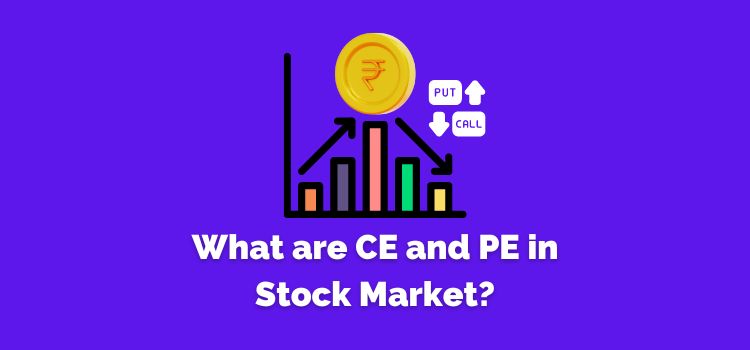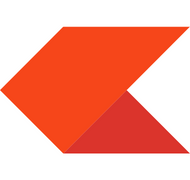The Stock Market is full of technical things which is hard to understand if you are a newbie to the stock market. In the Indian stock market, these two words CE and PE are very popular among traders. In this post, we will understand what are CE and PE in the stock market.
These two words CE and PE are used by Futures and Options traders. If you are only trading in the equity market, you know that it is very hard to make a good profit with less money. There are two reasons behind it i.e. less margin and small moves in the stocks.

In Futures and Options trading, the moves are very high on both sides and if you capture a move then you are going to make a very huge profit. In Futures and Options trading, the risk is also very high and it can also make your account fund/capital zero in a single trading day if you are not a good trader, and don’t know how about risk management and physiology.
Related Posts:
What are Futures and Options?
Futures and Options are two types of financial derivatives instruments where traders buy and sell an underlying asset without owning it.
Futures and Options trading is very complex and movement is very fast as a result there is a very high chance that a trader who is trading in Futures and Options without proper knowledge and experience can lose his/her money very soon.
Futures and Options features are available for Index and some stocks. Index Futures and Options are very popular among traders because of very high liquidity, good moves, and much more…
While the stocks Futures and Options are not popular among traders because it has low liquidity. It means if you want to buy or sell 100 Lots at the price of 123 then it will take a very long time to be executed at the mentioned price. If you use the market order, the ordered price will be very different from the price you want.
What are CE and PE in Stock Market?
In the stock market, CE and PE are totally opposite to each other. CE stands for CALL and PE stands for PUT. These two terms CALL OPTION (CE) and PUT OPTION, used for different purposes are mentioned below.
➤ Options Buying
In Options buying, you need very less capital to trade. There are some advantages and disadvantages to option buying.
■ Buy Call Option (CE)
If you buy a Call Option (CE) it means your analysis says you are bullish in the market (Index or Stock). In short, if your analysis shows that the market (index or stock you are trading) is bullish you’ll buy CALL OPTION.
■ Buy Put Option (PE)
If you are bearish on the Index or any stock, you have to buy a Put Option (PE). If the market goes down you’ll make money.
➤ Option Selling
In Options selling, you need more funds to sell options but you can reduce the required margin via hedge. There are also some advantages and disadvantages in option selling. A lot of traders prefer Options selling because the advantages are more in comparison to disadvantages of options selling.
■ Sell Call Option (CE)
You plan Call Option (CE) selling when your view on the index or stock is bearish/negative.
■ Sell Put Option (PE)
When you plan a bullish trade, you can sell a Put Option (PE).
15+ Terms of Futures and Options
What are CE and PE in the stock market is one term. In the futures and options, there are also many terms, you must know before you trade in futures and options. Without knowing about these terms, you may take wrong decisions.
Note: Here, our motive is to tell some basic information about all the important terms in the Futures and Options. So, do your own research about each below-mentioned terms for complete in-depth information.
And here are some best trading apps that allow you to buy and sell stocks online in India.
 Rating: 9.8/10 |  Rating: 9.1/10 |
Rating: 8.5/10 |  Rating: 8.6/10 |
➤ Long
The term represents you are buying a stock/index. Traders prefer the word Long instead of buying in the stock market, but not all traders do.
➤ Short
Short is the opposite of the long term, when you sell any stock, futures and options, etc. it means you made or making a short trade.
➤ Big Price
The bid price is the highest price that a buyer is willing to pay for stock/F&O, etc.
➤ Ask Price
Ask Price is the lowest price that a seller is willing to pay for a Stock/F&O, etc.
➤ Strike Price
The strike price is the price, where you buy or sell an option on a predefined date of an underlying asset.
➤ Lot Size
Index and Stocks’ Futures and Options are available in Lot size, you can not buy them in quantity. The lot sizes of different stocks and indexes can be different.
➤ Expiry
Expiry is the date when the derivative contracts will expire. In stocks, there is monthly expiry. In the index, there are weekly as well as monthly expiry too. Expiry day is different for each index i.e.
| Index | Expiry Day |
|---|---|
| Nifty | Thrusday |
| Finnifty | Tuesday |
| Bank Nifty | Friday |
➤ In the Money (ITM)
In simple words, if the current price of the index is greater than the strike price you have chosen to trade is called In-the-money (ITM). In ITM, there is very high risk as well as profit, it depends upon which strike price you choose.
Ex. Current price of Nifty is 19,000 and the selected option Nifty 18,950 or lower than it. It is In-the-money (ITM).
Above I have taken an example of an index and it is applied to all indexes and stocks.
➤ At the Money (ATM)
If the current price of an Index is equal to the strike price you seleted is called At the Money. In ATM, the risk and profit is moderate.
Ex. Suppose the current price of Nifty is 18900 and your selected option is 18
➤ Out of the Money (OTM)
In Out of the Money (OTM) the strike price is higher than the current price of the index or stock. We trade OTM when the target in the index or stock is very high. There is low risk if the market goes against your risk.
Ex. Assume the current price of the Nifty index is 19000 and your selected strike price is Nifty 19,300 CE, etc.
FAQs
Yes, you can buy both CE and PE at the same time. Buying CE and PE have some advantages and disadvantages. Do your research on this for complete information.
You can sell your CE option when you think the index or stock will go down from any specific level.
Buying a put is bearish. You buy put when you think the index or stock will go down from a specific level.
Final Words: Above we shared What is CE and PE in the stock market. Not only this term of the Futures and Options we covered, but we also covered A lot of terms which play a very important role in the Futures and Options trading. To become a profitable trader you must have these kinds of information about Futures and Options trading.
